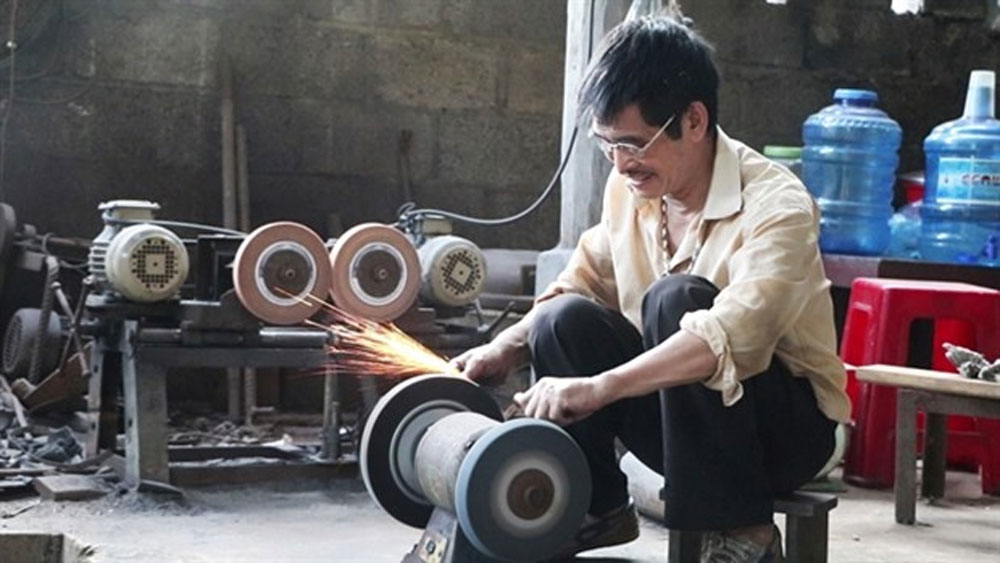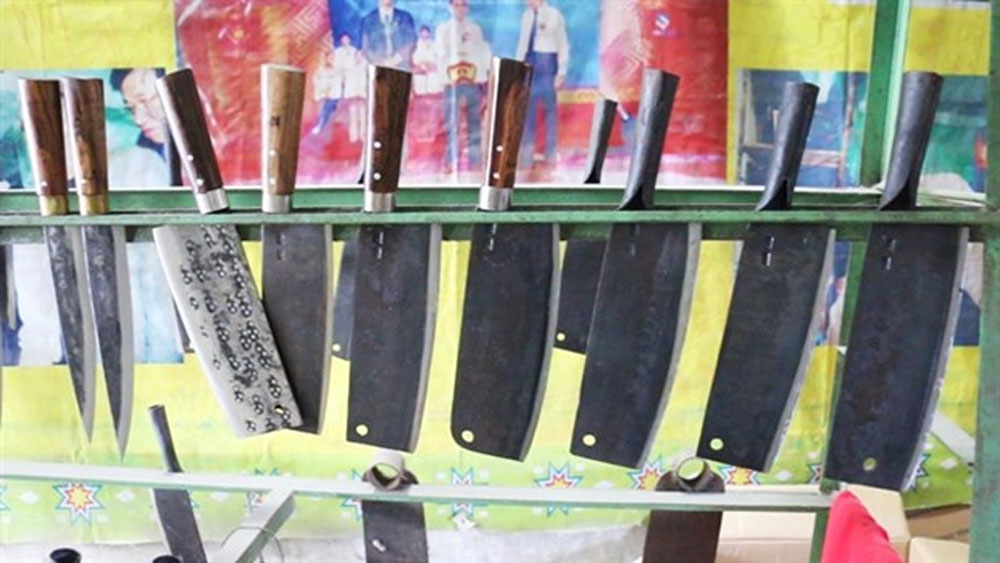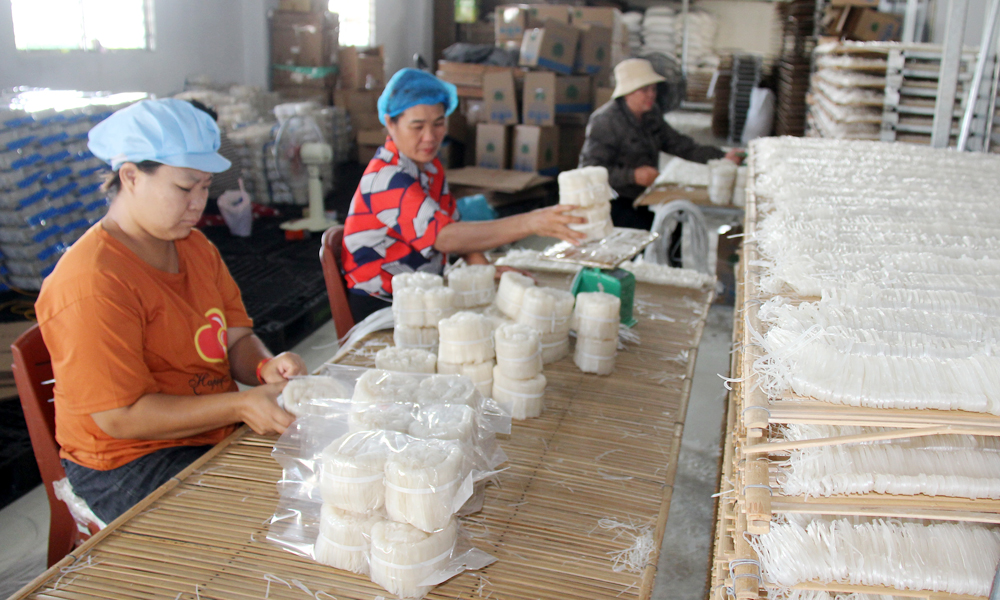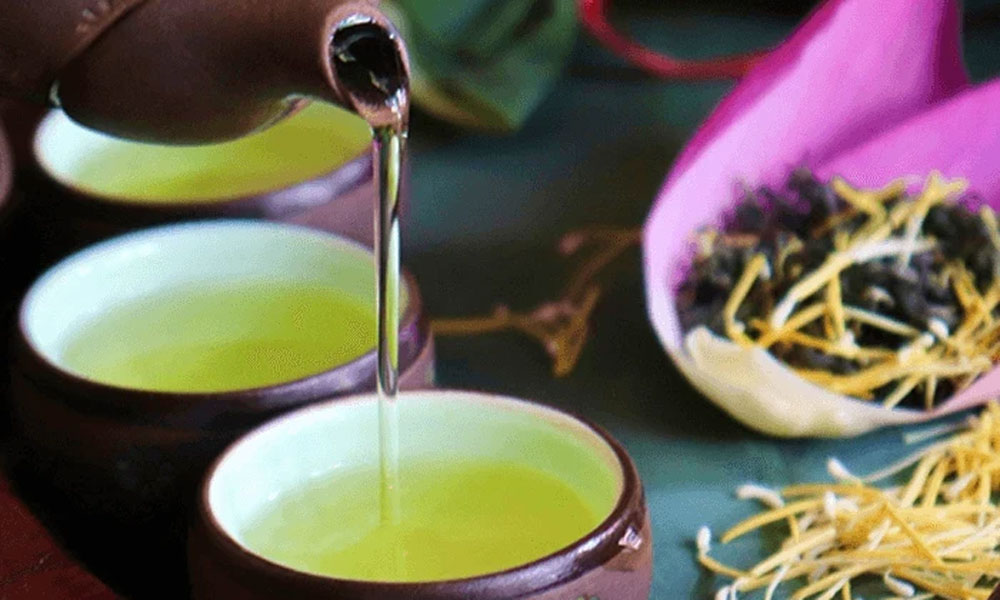Knife village retains traditional craft
That noise is the sound of thousands of knives, of all shapes and sizes, being made each year by about 350 blacksmiths of the Nung ethnic minority.
During the day the village is filled with the sounds of workers beating and hammering steel as they forge knives using traditional techniques and recycled materials.
 |
|
Long Anh Chien, 58, sharpens a knife at his workshop. |
“We have been doing this job since my grandparents’ time, and I don’t remember exactly when it started,” said 58-year-old Long Anh Chien.
Legend has it that the craft was first started in the village about 200 years ago.
Nowadays some 200 households in Phuc Sen earn a living forging knives.
An experienced blacksmith can make 4-5 knives a day, a less experienced one 3-4, Chien said.
Chien started learning to make knives when he was 15. When he grew up he left the village to work elsewhere, but returned and took up the traditional craft in 1998.
Despite the stable income, Chien said the job requires a lot of hard work and the mastery of emotions to do it well.
“With this job we all work 10 hours a day, not eight like other jobs. Ten hours and a lot of effort, technique and skill,” he said.
“A blacksmith has to be both aggressive and calm. That’s what’s special about this job. If you’re being aggressive all the time your products will all go to waste. If you’re calm all the time and do everything slowly, the products will also not turn out well.
“Because the temperatures of fire fluctuate and decrease quickly. You have to be very quick to take advantage of the heat, that’s when your high temper comes into use. But then when you shape the knives you have to be very calm. Very calm and careful, otherwise your knives will not be sharp.”
There are different steps to make a knife but Long Anh Minh, 47, said there are four major ones.
“The first step of making a knife is to choose the steel. Then you temper the steel. Then you forge the knife, which is the most important step. The more carefully you do it, the higher quality your knife will be. Then you hone and shape it,” he said.
 |
|
Long Anh Chien, 58, sharpens a knife at his workshop. |
“The knives might be made from the same steel, but during the forging process, the longer you beat and hammer the knife, the more refined it will be since all the impurities have left.”
With some 20 years of experience in the trade, Minh said what makes Phuc Sen knives special is the manual forging process.
“I visited other knife villages and saw the blacksmiths there, while still using scrap steel from used cars like us, they use machines a lot and skip the manual steps when making the knives,” he said.
“Their knives might be sharp at first, but not for long. How long the knife stays sharp depends on the manual forging process.”
Requiring a lot of physical strength, making knives may seem to be a job for men. But Minh’s wife helps him with the majority of the work, and he said he wants to pass the job on to his children and keep the traditional craft alive.
Source: VNA
 Bắc giang
Bắc giang
















Reader's comments (0)